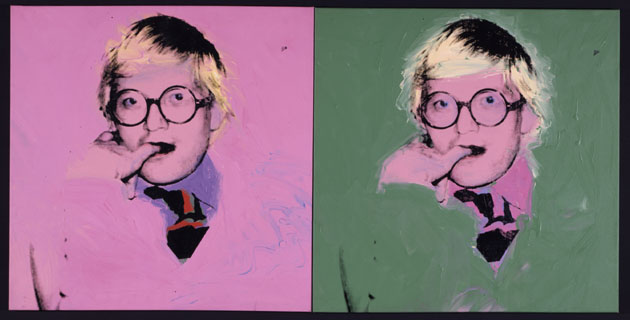Rumour has it that the organisers of Tate Modern’s would-be autumn blockbuster originally wanted to call it “Sold Out”. The people in marketing pointed out that prospective visitors might simply assume that the exhibition was, indeed, fully booked – and not bother to turn up. So “Sold Out” became “Pop Life: Art in a Material World”.
Selling out, nevertheless, is the fundamental subject of this thought-provoking pandaemonium of an exhibition. The show takes late Warhol as its starting point and teases out the many strands of art attributable to the influence of his self-consciously baleful, affectless, nakedly commercial and celebrity-obsessed persona. The exhibition as a whole amounts to an ingenious piece of devil’s advocacy, a defence of Warhol’s decision to sell his soul to the joint forces of Mammon and mass media. That sell-out, so it is argued,has inspired much of the most arresting modern art of the last 30 years.
The exhibition opens with the man himself, captured on video in an advertisement from 1983 intended, with neat circularity, to sell TDK videotapes to the American mass market. In perfect deadpan mode, the platinum blond spouts his lines with wooden inscrutability. Nearby hangs one of the many silk-screened self-portraits churned out by the artist in his later years: Andy red of face, but still unrufflably bland.
The opening gallery also hints at some of the future coordinates to be visited. Jeff Koons’s balloon-sculpture, Rabbit, pricks up its stainless steel ears. Takashi Murakami’s Hiropon beggars belief, a fibreglass statue of a diminutive Japanese girl with breasts the size of watermelons, expelling a frozen circle of milk – misbegotten hybrid of a pornographic manga strip and Rubens’ lactating Milky Way.
A clutch of late Warhols ensues, including the intriguingly self-mocking Gem paintings of the late 1970s. Silkscreened...
The opening gallery also hints at some of the future coordinates to be visited. Jeff Koons’s balloon-sculpture, Rabbit, pricks up its stainless steel ears. Takashi Murakami’s Hiropon beggars belief, a fibreglass statue of a diminutive Japanese girl with breasts the size of watermelons, expelling a frozen circle of milk – misbegotten hybrid of a pornographic manga strip and Rubens’ lactating Milky Way.
A clutch of late Warhols ensues, including the intriguingly self-mocking Gem paintings of the late 1970s. Silkscreened...


